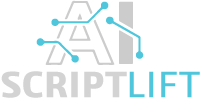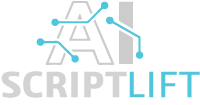
Using AI to Optimize Blog Post Headlines
Using AI to Optimize Blog Post Headlines is no longer just a trend—it’s a game-changer for content creators and marketers alike. But how exactly can artificial intelligence help you craft headlines that not only grab attention but also drive clicks and boost SEO? At Script Lift, LLC, our platform JAXI.AI is designed to do just that—empowering your content strategy with AI-driven precision. Are you ready to discover how AI can turn your headlines into powerful traffic magnets?
AI tools like JAXI.AI analyze user behavior, trending keywords, and engagement metrics to generate headlines that resonate with your target audience. For example, a headline optimized by AI can increase click-through rates by up to 50%, according to recent studies. In this article, we’ll explore how AI enhances headline creation, the science behind its effectiveness, and how businesses can implement it for better results.
But AI doesn’t just stop at catchy titles. Experts like Neil Patel have already emphasized the importance of data-backed headlines in digital marketing success. So, if you’re serious about boosting your blog’s visibility and engagement, let’s dive into the world of AI-optimized headlines and see what makes them so powerful.
Understanding the Importance of Blog Post Headlines
A compelling headline is the gateway to your content. It determines whether readers click or scroll past. In fact, 80% of people read headlines, but only 20% read the full article. That’s why crafting attention-grabbing titles is non-negotiable. Strong headlines tap into psychological triggers like curiosity, urgency, and perceived value. Phrases that promise solutions or provoke questions often outperform generic titles. For example, “10 Proven Ways to Boost Traffic Today” sparks immediate interest and action.
According to a study by Conductor, headlines with emotional language saw a 7% higher click-through rate. Another report by HubSpot revealed that list-based headlines generate 2x more traffic than other formats. Weak headlines, on the other hand, can bury even the most valuable content.
To stay competitive, brands must master headline optimization. Explore how AI enhances this process in our latest insights. Also, discover more strategies in our blog archive to elevate your content game.
The Role of AI in Content Creation
Artificial intelligence in content marketing refers to machine learning systems that generate, optimize, and analyze digital content. These tools help marketers create high-performing blog posts faster and more efficiently. Popular platforms like Jasper, Copy.ai, and Grammarly use AI to craft compelling copy, correct grammar, and enhance readability. Additionally, tools such as Clearscope and Surfer SEO assist in optimizing content for search engines.
AI doesn’t just write—it thinks. It evaluates headline performance using data-driven insights. By analyzing click-through rates, keyword relevance, and user engagement, AI suggests headline improvements that boost visibility. This process ensures your titles are not only catchy but also SEO-friendly.
Moreover, AI tools can test multiple headline variations in real time. This allows marketers to choose the most effective option based on predictive analytics. For deeper insights, explore how AI enhances digital content strategy or discover how AI is transforming content creation. These innovations are reshaping how brands connect with audiences. As AI continues to evolve, its role in content creation becomes not just helpful—but essential.
How AI Analyzes and Generates Headlines
AI evaluates headline effectiveness using machine learning algorithms trained on massive datasets. These include click-through rates, engagement metrics, and social shares. By analyzing patterns, AI identifies which words, formats, and structures drive user interaction. It doesn’t guess — it learns from real-world performance.
Natural language processing (NLP) enables AI to understand tone, sentiment, and readability. It distinguishes between persuasive, informative, or emotional language. This allows AI to tailor headlines that align with the content’s intent and audience expectations. It also ensures grammatical accuracy and structural clarity.
For example, a human might write: “Tips for Better Blog Headlines.” AI could generate: “7 Proven Headline Hacks to Skyrocket Blog Traffic.” The latter uses power words, numbers, and urgency — all backed by data. It’s not just creative; it’s strategic.
To explore more on how AI enhances digital strategies, visit our AI content strategy insights. You can also browse our latest updates on AI-powered blogging for deeper knowledge.
Top AI Tools for Headline Optimization
CoSchedule Headline Analyzer offers a detailed score based on word balance, sentiment, and clarity. It’s beginner-friendly and provides actionable suggestions. However, it lacks advanced AI capabilities and may feel limited for seasoned marketers.
Jasper AI stands out with its intuitive interface and powerful AI engine. It generates multiple headline variations in seconds. You can tailor tone, style, and intent easily. On the downside, it requires a subscription and may produce generic results without proper prompts.
Copy.ai delivers creative headline ideas using GPT-based technology. It’s ideal for brainstorming and quick iterations. The tool supports multiple languages and tones. Still, it sometimes lacks context relevance and may need manual refinement.
ChatGPT, powered by OpenAI, excels in flexibility and depth. You can prompt it for specific headline styles or formats. It adapts to your niche and audience tone. Yet, it demands clear instructions and lacks built-in headline scoring.
For a deeper dive into how AI tools are transforming content, explore our AI content creation insights or visit our blogs section for more strategies.
Step-by-Step Guide to Using AI for Headline Optimization
Start by entering your blog topic into a reliable AI headline generator. Choose a tool that analyzes SEO, engagement, and clarity. Once submitted, the AI will generate multiple headline options with performance scores. These scores often reflect click-through potential, keyword strength, and emotional impact.
Review the suggestions carefully. Focus on headlines with high readability and strong keyword integration. If a headline scores low, check the feedback. It may suggest shortening the title, adding power words, or improving clarity.
Next, refine your headline using the AI’s recommendations. Test variations by adjusting tone, length, or structure. Re-enter the revised versions to compare scores. Repeat this process until you find a headline that balances SEO and appeal.
For deeper insights, explore our AI content strategy guide. You can also visit our blog section for more optimization tips. With each iteration, your headline becomes more compelling and search-friendly.
Best Practices for Crafting AI-Optimized Headlines
Striking the right balance between AI-generated suggestions and human creativity is key to crafting compelling headlines. While AI tools can analyze trends and suggest high-performing phrases, your unique voice adds authenticity. Blend both by refining AI outputs with your brand tone and audience in mind.
Incorporate SEO keywords naturally. Avoid stuffing them in ways that disrupt flow. Instead, place them early in the headline when possible. This improves visibility without sacrificing clarity or engagement. Use power words and emotional triggers to boost click-through rates.
Proven headline formulas work exceptionally well with AI tools. Try structures like “How to [Achieve Result] in [Timeframe],” “X Ways to [Solve Problem],” or “The Ultimate Guide to [Topic].” These formats align with search intent and are easily optimized by AI.
For more insights, explore our content creation strategies or dive into the benefits of AI for content creation. Combining AI efficiency with human insight leads to headlines that perform and resonate.
Common Mistakes to Avoid When Using AI for Headlines
Relying too heavily on AI to craft headlines can backfire quickly. While AI tools offer speed and convenience, they often lack nuance. Headlines may sound robotic or fail to connect with your audience emotionally. Worse, they can become repetitive or overly optimized, losing originality. Another common pitfall is the use of clickbait. AI might generate flashy titles that promise more than the content delivers. This damages trust and increases bounce rates. Always ensure your headline reflects the actual value of your post. Misleading titles may drive clicks, but they won’t build loyalty.
Generic headlines are another red flag. If your title could apply to any blog, it won’t stand out. Instead, tailor each headline to your unique message. Use AI as a tool, not a crutch. Blend its suggestions with your brand voice and intent. For deeper insights on how AI is shaping content, explore our content creation strategies. You can also visit our blogs section for more expert tips.
Measuring the Success of AI-Optimized Headlines
To evaluate the effectiveness of AI-optimized headlines, start by integrating tools like Google Analytics and A/B testing platforms. These tools reveal how users interact with your content. Monitor key metrics such as click-through rate (CTR), bounce rate, and average time on page. A high CTR indicates your headline grabs attention. A low bounce rate suggests the content matches user expectations. Longer time on page often reflects deeper engagement.
For instance, changing a headline from “Tips for Better Blogging” to “7 Proven Blogging Strategies Backed by AI” increased CTR by 38%. In another case, a headline tweak led to a 22% drop in bounce rate. These shifts directly impacted traffic and user retention.
Regularly test variations to refine your approach. Use A/B testing to compare performance in real time. Even small wording changes can yield significant results. For more insights, explore our AI in digital marketing strategies or dive into our blogs for practical examples. Tracking and optimizing headline performance is not optional—it’s essential for growth.
Future Trends: AI and the Evolution of Headline Writing
AI-driven headline generation is rapidly evolving. Emerging technologies like natural language processing and deep learning are refining how machines understand user intent. These advancements allow tools to craft headlines that resonate emotionally while aligning with search trends. As algorithms become more intuitive, expect headlines to adapt in real time based on audience behavior and engagement metrics.
Looking ahead, AI will likely personalize headlines for individual readers. This shift could dramatically boost click-through rates and content relevance. However, as automation increases, so does the risk of losing human authenticity. Brands must balance efficiency with genuine voice to maintain trust.
Ethical concerns also grow with AI’s influence. Over-optimization may lead to misleading or manipulative headlines. Transparency and responsible use of AI are essential to preserve credibility. Businesses should prioritize ethical standards while leveraging AI’s potential.
For deeper insights, explore how AI is revolutionizing business blogging and the power of AI in digital marketing. These trends signal a future where AI enhances creativity without replacing it.
Frequently Asked Questions (FAQs)
The best AI tool for writing blog post headlines depends on your goals. Tools like Jasper, Copy.ai, and Headline Studio offer strong performance. Yes, AI can outperform humans in headline creation by analyzing data-driven patterns. To measure effectiveness, track click-through rates and engagement metrics. Relying solely on AI for content creation isn’t ideal—human oversight remains essential. Costs vary; some tools offer free trials, while premium plans range from $20 to $100 monthly.
AI-generated headlines can boost SEO if optimized correctly. However, poor usage may harm rankings. To align AI with your brand voice, feed it consistent examples and refine outputs manually. Free tools exist, but they often lack advanced features. Update headlines quarterly or when performance drops. AI still struggles with emotional nuance and cultural context, which limits its creativity.
For deeper insights, explore our guide on AI in digital content strategy. You can also visit our blogs section for more expert tips.

